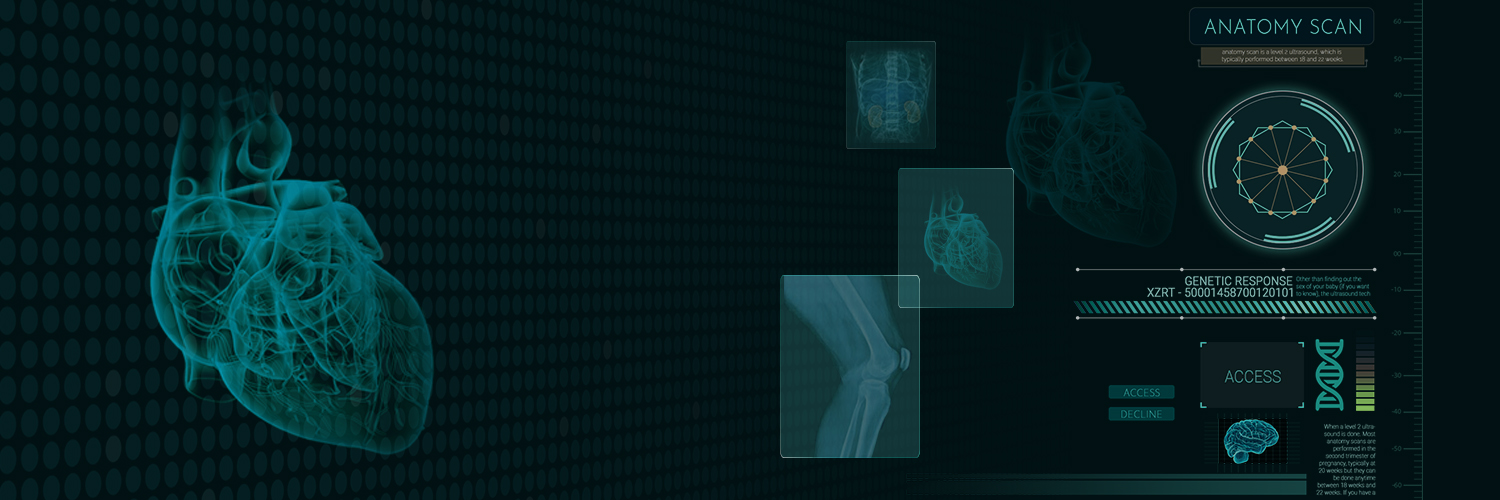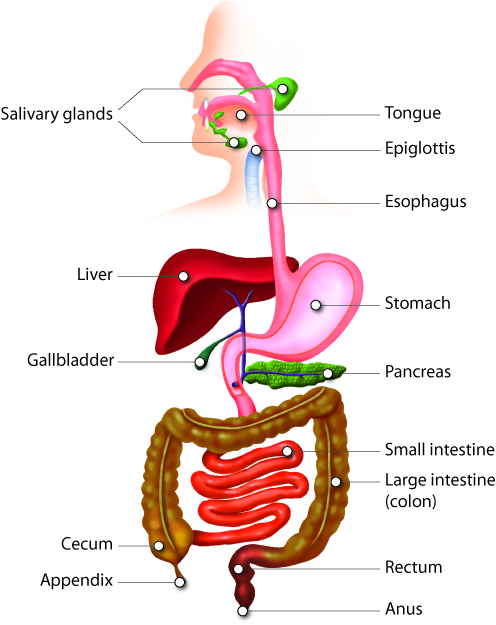HUMAN DIGESTIVE SYSTEM
The human digestive system is a group of organs that work together to convert food into energy and basic nutrients for the entire body. The food we intake is digested and used by our body and the unutilized parts of the food are defecated.
Components of the human digestive system:
Human digestive system is made of two major parts, namely the gastrointestinal tract or GIT or alimentary canal and accessory organs that include tongue, liver, pancreas, etc. that together help in digestion.
- Alimentary canal: The alimentary canal is the long tube through which food passes and gets digested gradually as they travel through various compartments. It begins at the mouth known as buccal or oral cavity, passes through the pharynx, esophagus or food pipe, stomach, small intestines, large intestines, rectum and finally ends at the anus.
- Accessory organs: These are the organs which participate in the digestion process and stimulate the digestion by releasing certain enzymes.
Process of digestion in human beings:
- Ingestion: In human beings, food is ingests through the mouth.
- Digestion: Digestion in various part of digestive system takes place with the help of enzymes. Enzymes are the biological catalyst that helps in chemical digestion of food.
Mouth or the Buccal Cavity or oral cavity:
- The food that we intake starts its journey in the mouth that has many accessory organs such as the tongue, teeth, and salivary glands, which aid in the digestion of food.
- Teeth grind the food into small pieces.
- Salivary glands secrete saliva.
- The human saliva contains an enzyme called salivary amylase.
- Salivary amylase digests the starch present in food into sugar and moistens the food.
- The tongue and other muscles then push the food into the pharynx.
Pharynx:
- The pharynx is responsible for passing the chewed food from the mouth to the esophagus.
- Epiglottis is a flap of tissue present in pharynx prevents food from entering into the wide pipe.
Oesophagus or food pipe:
- The food in the mouth swallowed by the tongue goes down the food pipe called oesophagus.
- The oesophagus carries food to the stomach.
- The contraction and expansion movement of the walls of food pipe is the peristaltic movement.
Stomach:
- The stomach is a J-shaped organ present on the left side of the abdomen.
- It is the largest part of the human digestive system.
- It is a thick-walled muscular bag located on the left side of the abdominal cavity that acts as a storage tank for food so that the body has time to digest large meals properly.
- The food from the food pipe reaches the stomach that opens into the small intestine at the other end.
- The inner walls of the stomach consist of the gastric glands which secrete gastric juice contains three substances. These continue the digestion of food that began in the mouth.
- Hydrochloric Acid: The presence of hydrochloric acid makes the gastric juice acidic in nature. Another function of hydrochloric acid is that it kills any bacteria which may enter the stomach with food.
- Enzyme Pepsin: In the acidic medium, the enzyme pepsin begins the digestion of proteins present in food to form smaller molecules.
- Mucus: The mucus helps to protect the stomach wall from its own secretions of hydrochloric acid. The partially digested food then goes from the stomach into the small intestine.
- From the stomach, the partially digested food enters the small intestine.
Small intestine:
- A major proportion of digestion takes place in the small intestines.
- The small intestine is the largest part of the alimentary canal.
- It is a highly coiled long, thin tube about 6.5 meters long in an adult man.
- The length of the small intestine depends on the diet of the organism.
- The walls of the small intestine secrete juices for digesting food.
- It also receives the secretions of two glands.
- All types of nutrients are digested here with the help of secretions which it receives from the liver and the pancreas.
- liver and
- pancreas
Liver:
- Liver secretes bile.
- Bile is a greenish yellow liquid made in the liver which is normally stored in the gall bladder. Bile is alkaline.
Bile performs two functions :
- makes the acidic food coming from the stomach alkaline so that pancreatic enzymes can act on it,
- bile salts break the fats present in the food into small globules.
Pancreas:
- Pancreas is large gland which lies parallel to and beneath the stomach.
- Pancreas secretes pancreatic juice which contains digestive enzymes. Digestive enzymes include pancreatic amylase, trypsin and lipase.
- The pancreatic juice digests the proteins and lipids.
- Pancreatic amylase: The enzyme amylase breaks down the starch,
- Trypsin: Theenzyme trypsin digests the proteins
- Lipase: Theenzyme lipase breaks down the emulsified fats.
- The walls of small intestine contain glands which secrete intestinal juice.
- The intestinal juice contains many enzymes which complete the digestion of complex carbohydrates into glucose, proteins into amino acids and fats into fatty acids and glycerol.
Absorption
- The small intestine is the main region for the absorption of digested food.
- The inner surface of small intestine has millions of tiny, finger like projections called villi.
- Villi gives the inner walls of the small intestine a very large surface area.
- The large surface area of small intestine helps in the rapid absorption of digested food.
Assimilation
- The blood carries digested and dissolved food to all the parts of the body. This becomes assimilated as part of the cells.
- This assimilated food serves the body cells to obtain energy as well as helps in growth and repair of the body.
- The digested food which is not used by our immediately gets stored in the liver in body as and when required.
Egestion
- The undigested food passes from the small intestine into a wider tube called large intestine. It’s called large intestine because of the wider tube about 1.5 metres long.
- The walls of large intestine absorb most of the water from the undigested food (with the help of villi) with the help of many symbiotic bacteria residing in it.
- Due to this, the undigested part of food becomes almost solid, which passes into the rectum, where it remains as semi-solid feces.
- Feces exit the body through the anus via time-to-time excretion.


